During the hot summer days in South America’s largest country, there is nothing more refreshing than a colorful bowl of freshly made açaí. This tasty treat, often topped with granola and even more fruit, has been a staple in the diet of most Brazilians — especially those in the north and northeast of the country — for centuries.
Açaí (pronounced ah-sigh-ee) is a small fruit native to the Amazon forest. While it is usually served in the form of pureed pulp — making for an infallible smoothie base — this berry is also served as juice and sorbet, as well as a side for meals.
Let’s explore what makes this tiny fruit a super berry.
Açaí means “Fruit that cries”
The most common explanation for the berry’s name suggests that “açaí” comes from the aboriginal word ĩwasa’i, which, in Tupian language, refers to something that cries or expels water.
The rich aboriginal culture of the region provides more colorful accounts of the origin of the name. The Amazon River region is full of legends that explain most of nature’s phenomena, and the abundance of the açaí, as well as its unique occurrence in this part of the world, are no exception.

Success
You are now signed up for our newsletter
Success
Check your email to complete sign up
The story goes that a tribe in the Amazon was facing a period of famine due to a severe drought. In an attempt to ensure the tribe’s food supply, the chief, Itaqui, ordered that all children born thereafter be sacrificed. As fate would have it, the next to give birth was the chief’s own daughter, Iaçá, who despite sincere pleas to her father, was not exempted from the decree.
The sacrifice of her infant boy left Iaçá sunk in despair. On her knees, she prayed to the gods for a way to show her father that such measures were not appropriate to protect the tribe. She cried herself to sleep, only to be awakened by the cry of a child.
When she opened the door, she saw her son smiling at the foot of a large palm tree. She ran to hug the child, but he disappeared just before her hands could reach him. Then she found herself embracing the tree, hopeless, unwilling to let go.
Iaçá’s body was discovered the following day, her arms still wrapped around the tree. Her face held a serene expression while her large dark eyes were fixed on the top of the palm tree. When Itaqui saw his daughter’s body, he noticed that her gaze was fixed in a bundle of dark purple berries in the highest branches.
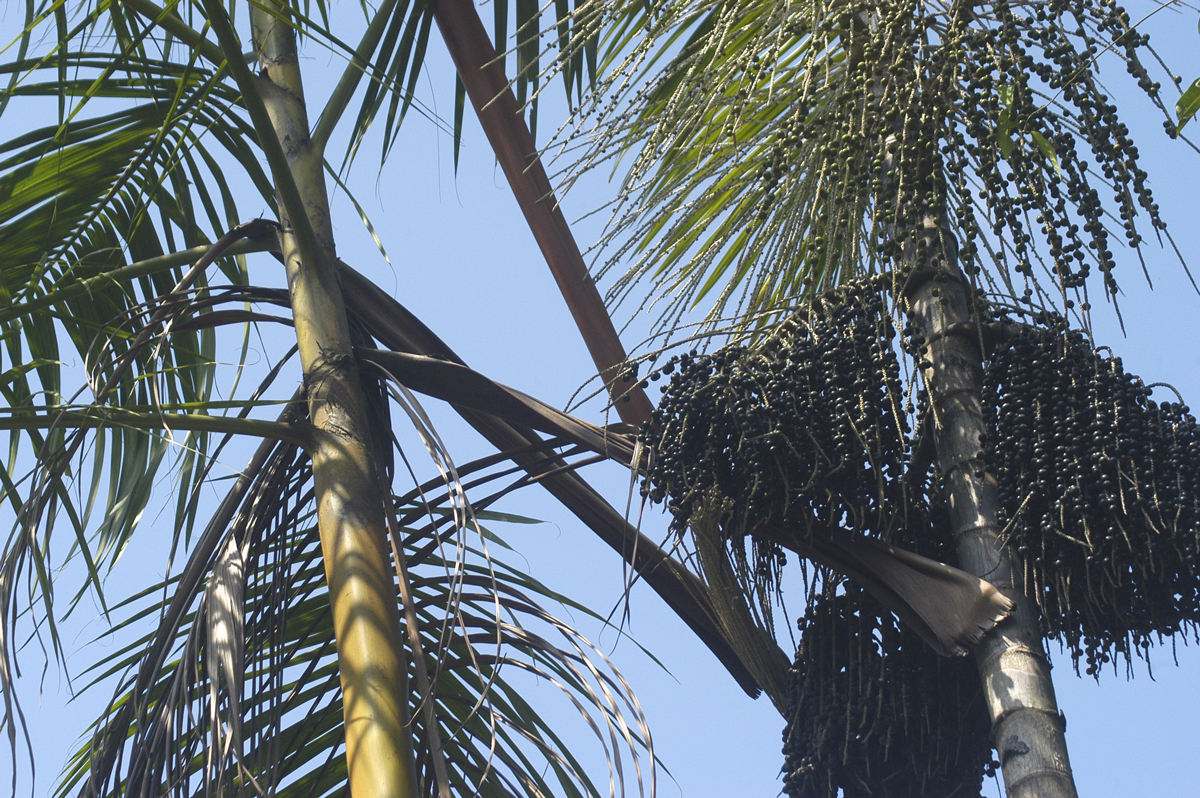
Upon collecting some of these berries, the tribe extracted a dark purple juice that turned out to be extremely nutritious. Itaqui thanked the gods for providing the tribe with a source of food, thus enabling him to lift the ban on childbirth.
The nourishing berry was named after Iaçá, using her name spelled backwards, to remember the tears that gave life to the legendary tree.
Harvesting açaí
Açaí is a small, round, dark-purple fruit with yellow flesh. Its outer appearance resembles that of a grape while its inner structure is similar to that of olives – containing a large pit in the middle. Although they are botanically classified as drupes – like apricots and plums – they are usually referred to as berries due to their size and color.
These fruits usually grow in clusters in the canopy of the açaí palm (Euterpe oleracea), a species native to the eastern Brazilian Amazon. This slender tree can grow over than 25 m tall, and has pinnate leaves – feather-like structures – up to 3 meters long.
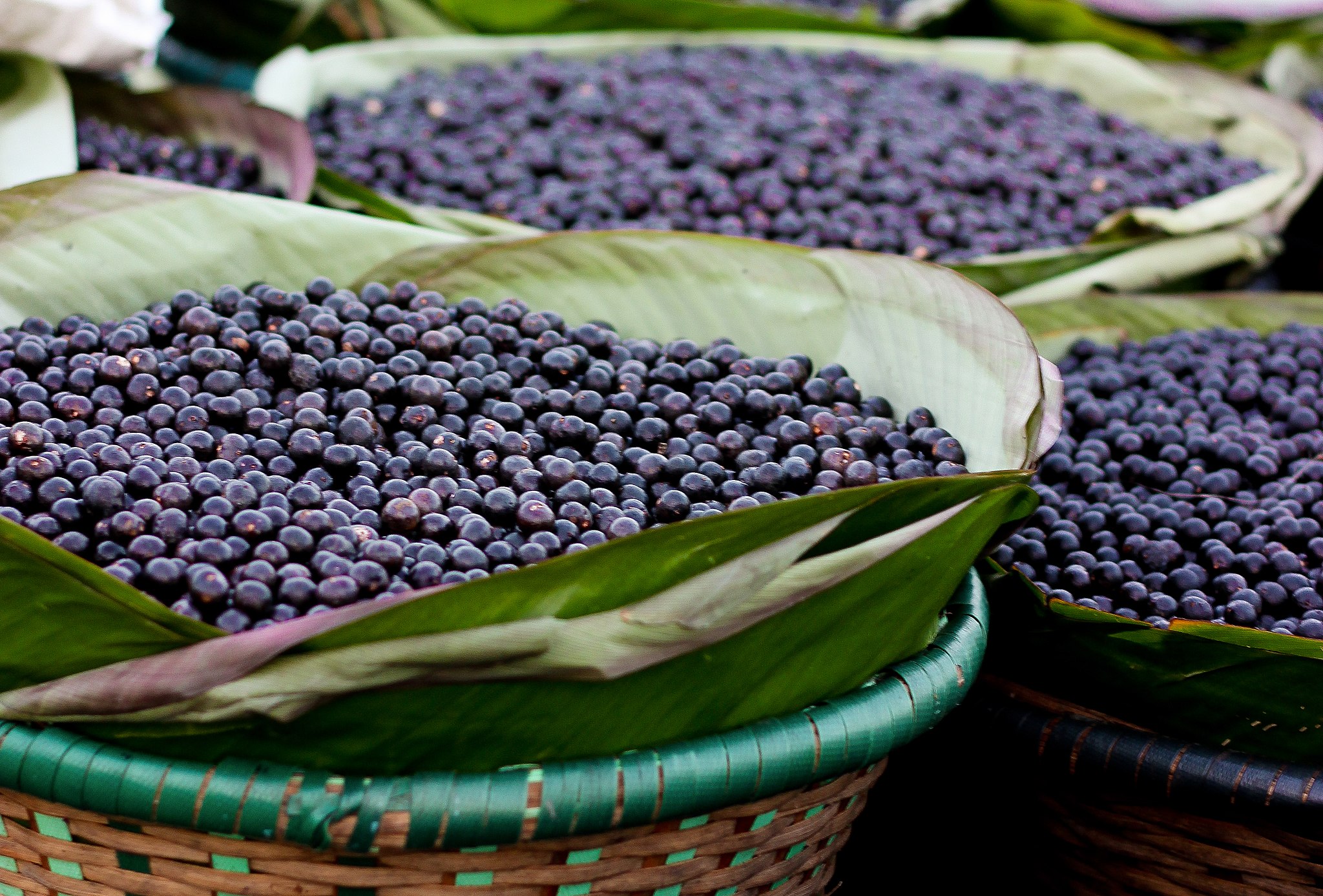
The process of harvesting the small berries is as rudimentary as it is effective in protecting the tree; Brazilian natives, with a knife firmly clamped between the teeth, use nothing more than a looped palm leaf tied to their feet to climb the tree. They selectively cut the branching pinnacles that are loaded with ripe fruit.
To ensure that traditions are passed on to the next generation, this daunting task is carried out even by children as young as seven years old.
To make them edible, açaí berries are soaked to soften their skin and then crushed to form a dark purple paste. Açaí fruit is rarely found fresh outside its growing region. Due to their short shelf life and to maintain a high nutritional content, they are exported in the form of frozen pulp, dried powder or pressed juice.
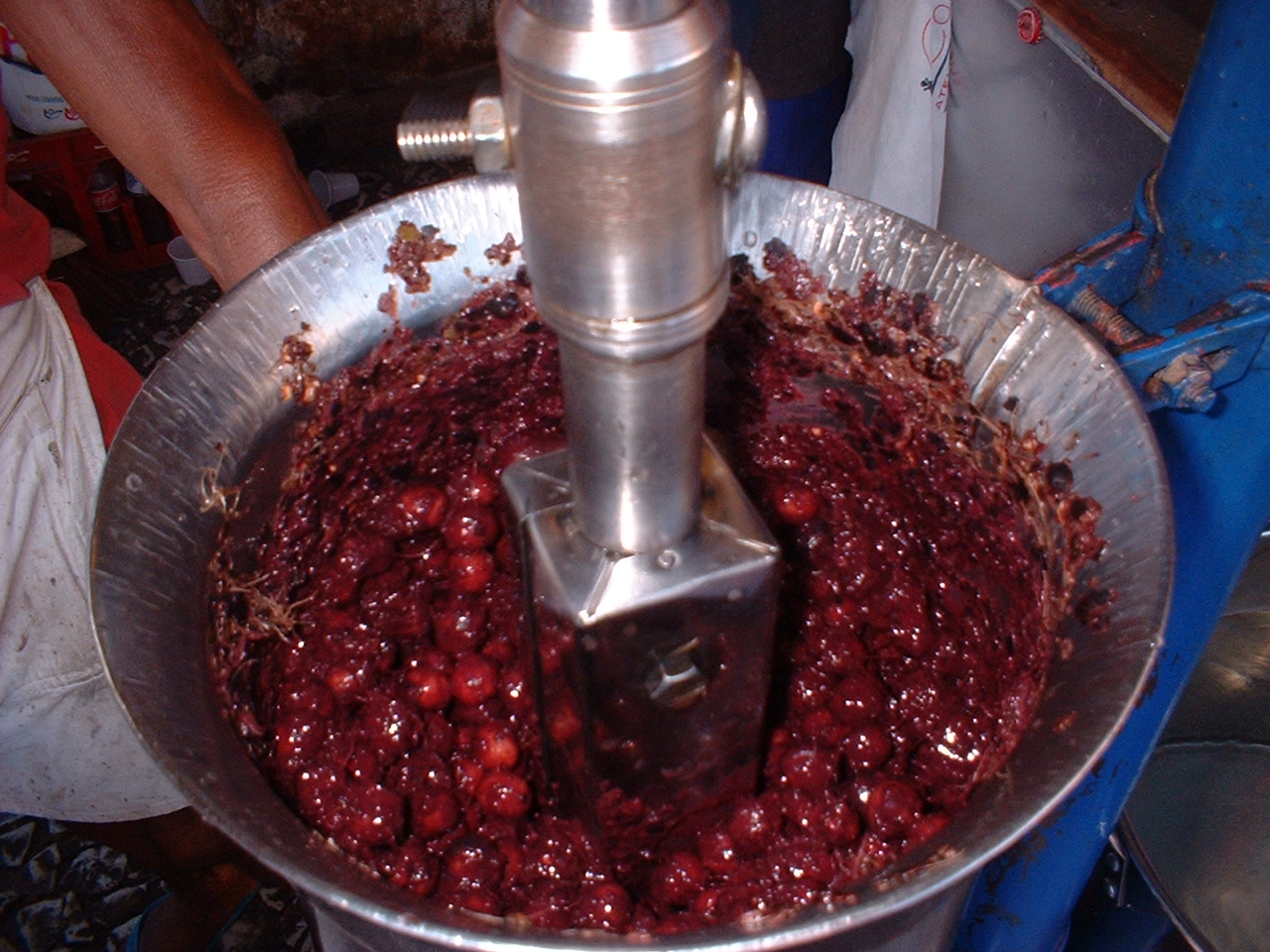
Simple ways to enjoy açaí
The flavor of açaí berries is often described as a combination of blackberries and unsweetened chocolate. Açaí’s versatile flavor profile makes it the perfect fruity dessert or the favorite tart garnish for a hearty meal.
Açaí na tigela
“Açaí na tigela” means “açaí in the bowl” – the most common form in which açaí is consumed. This dessert is made with the frozen, smashed pulp of the açaí berries, which is served as a smoothie in a bowl or glass. It is usually topped with more fruit – typically banana – and granola. Sometimes, for a more indulgent treat, the bowl is drizzled with guaraná syrup or condensed milk.
The traditional açaí na tigela is simple and easy to prepare, requiring only three ingredients: açaí pulp, frozen banana and water. Fortunately, açaí pulp is readily available in international Brazilian stores, making it possible to enjoy this tasty dessert almost anywhere in the world. More complex combinations can include chocolate chips, peanuts and tapioca.
Fried fish with Açaí
Although we usually think of açaí as a fruity dessert or juice, people from northern Brazil are more likely to serve it as a salty paste to accompany hot meals, which often contain seafood. This unique combination dates back to the time when Brazil’s indigenous people first discovered the fruit, and fish from the Amazon River was an essential component of their diet.
The savory açaí paste is made by simply blending açaí pulp with a pinch of salt until it is creamy. This paste can be served directly or enhanced by adding other ingredients such as olive oil and/or lemon.
Açaí juice or smoothie
Açaí smoothie, a drinkable meal for those on-the-go, requires blending frozen açaí pulp with other ingredients like bananas, berries, and milk – to give the mixture a creamy, fluid texture.
The preparation of acai juice follows the same procedure and includes almost the same ingredients as those of a smoothie, except fruit juice – usually orange juice – is used instead of milk.
Açaí’s Health Benefits
The dark purple color of açaí fruit hints at its rich nutrition. They stand out among other fruits due to their high fat content, low sugar levels and abundant antioxidants. The effect of such nutrients in the treatment of chronic diseases has earned these berries recognition as a superfood.
Full of antioxidants
Antioxidants are natural or artificial substances that inhibit the effects of free radicals in the body. When free radicals are allowed to interact with human cells, they cause extensive damage by altering cell structures, which can lead to a wide range of diseases such as diabetes and cancer.
Açaí is one of the most antioxidant-rich berries. Its antioxidant properties come from several plant compounds such as anthocyanins, which gives açaí its intense purple color.
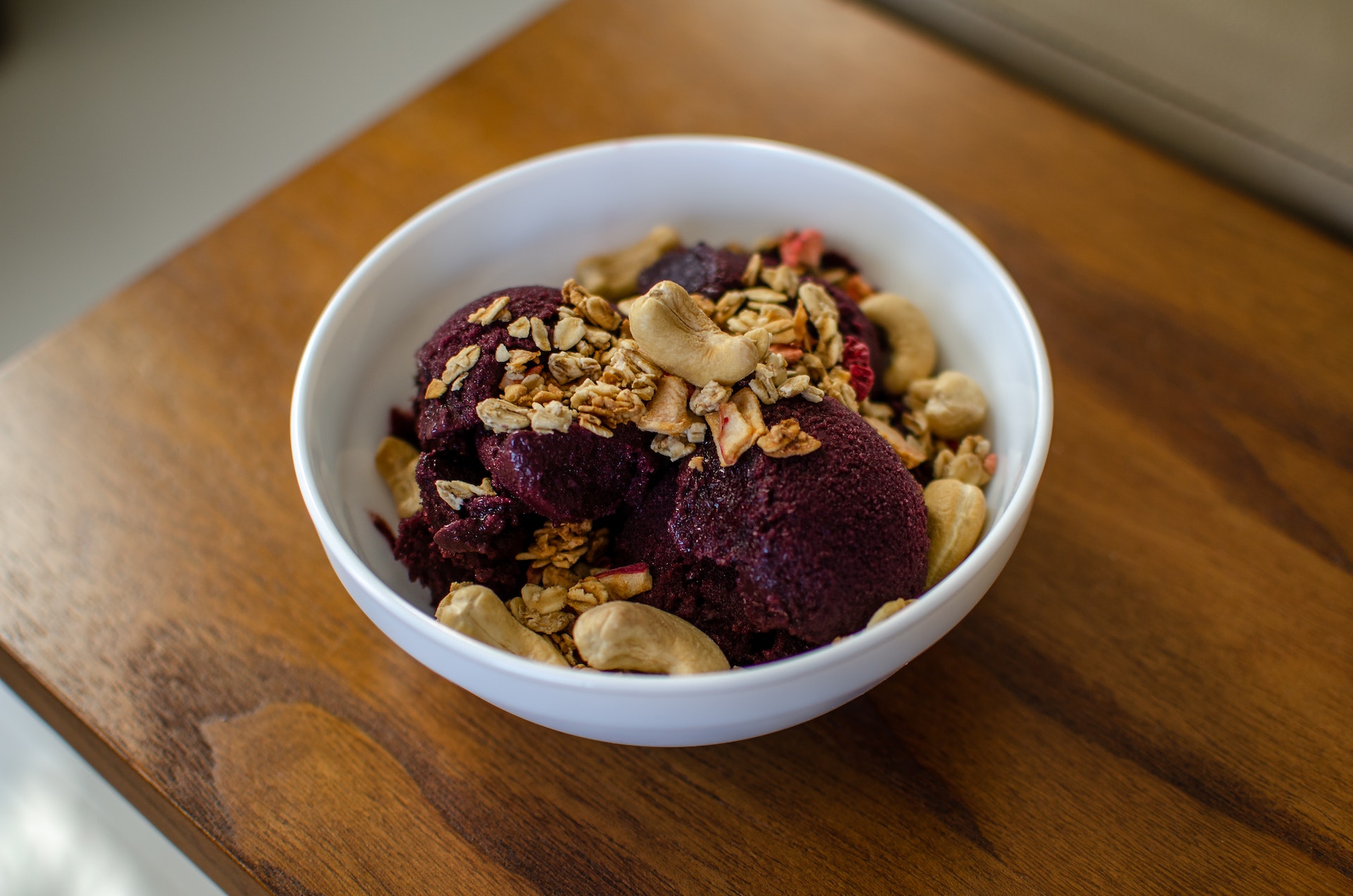
Rich in minerals
Minerals are compounds that our bodies need to function properly. Usually classified as major minerals, macrominerals, trace minerals and microminerals; a large number of them are present in açaí berries.
Calcium is the main macromineral contained in açaí. According to the U.S. Department of Agriculture (USDA), 100 grams of açaí pureé contain 40 milligrams of calcium, a mineral important for bone health, muscle and nerve function, blood circulation and immunity.
A variety of trace minerals are also found in açaí berries, including chromium – key in blood sugar regulation – and other compounds such as zinc, copper, manganese, iron and phosphorus, many of which are part of enzymes and play a role in various bodily functions.
Regulates cholesterol
A study in rabbits published in the National Library of Medicine showed that açaí has the potential to lower LDL (low-density lipoprotein) cholesterol, commonly known as “bad cholesterol,” by decreasing cholesterol synthesis and absorption.
Likewise, a study in rats concluded that açaí pulp can reduce serum cholesterol by modulating the expression of genes involved in its production. Although further research is needed, it is hypothesized that consumption of açai may have the same effect in humans.
In addition, açai’s anthocyanins pigments have been shown to increase the concentration of HDL (high-density lipoprotein) or “good cholesterol,” which lowers the risk for heart disease and stroke.
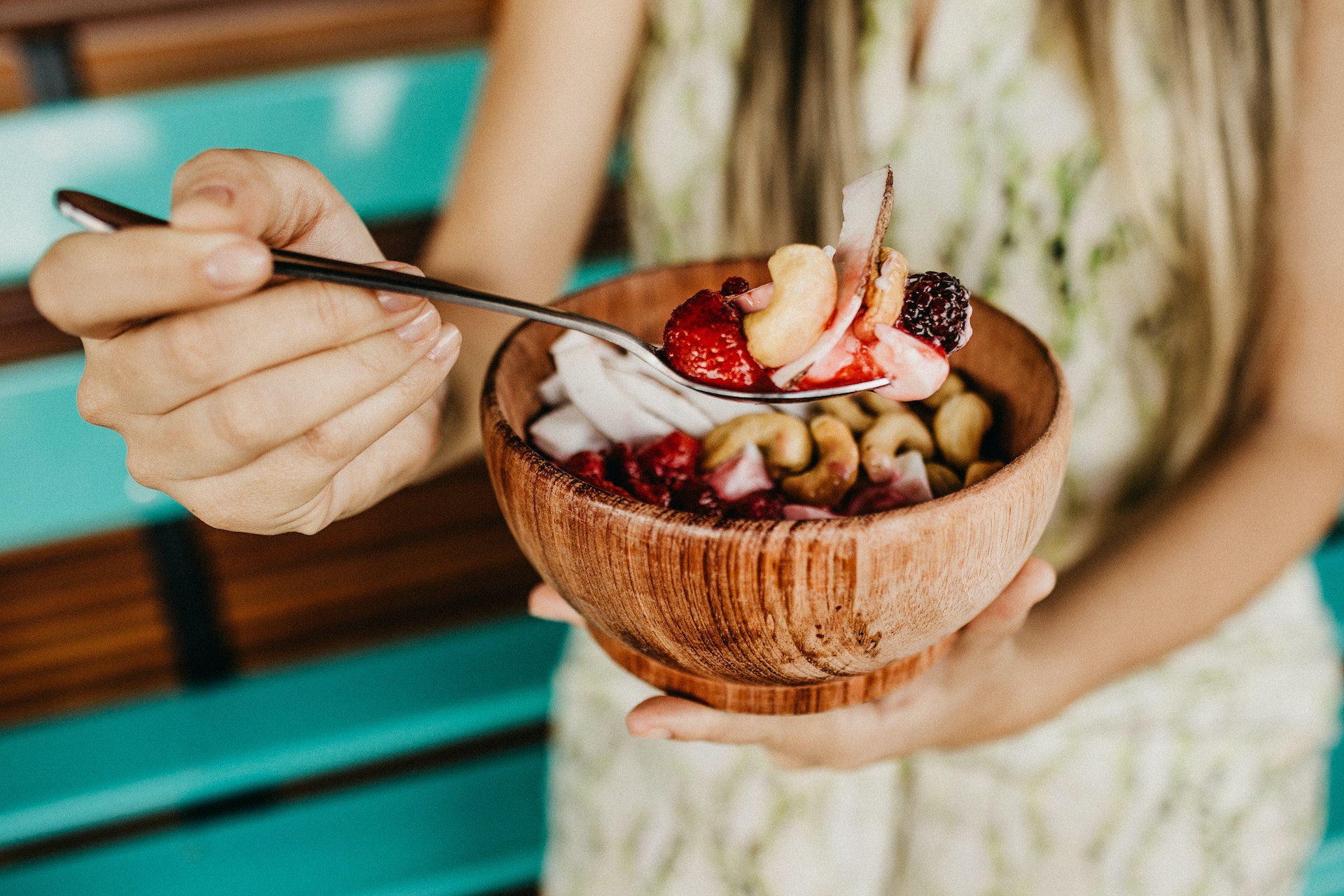
May prevent cancer
Research has discovered that açaí consumption has chemopreventive properties. A study found that açaí powder has a protective effect against colon cancer. Another experiment showed that açai pulp can inhibit the development of bladder cancer given its antioxidant action.
Other studies have analyzed the effects of açaí on other types of cancer and have found that it is not effective in the treatment of stomach cancer, but could be effective in breast cancer. Further studies are needed to determine the full applications of açaí in the prevention of cancer in humans.
Stimulates brain function
Besides the positive role of açaí’s antioxidants in keeping brain cells undamaged, compounds present in these berries have demonstrated their potential to inhibit pathologies involved in cognitive decline by restoring the effects of stressor-induced dysregulations.
Additional research has concluded that incorporating açaí fruit pulp to the diet can improve memory and counteract age-related cognitive deficits due to its influence on antioxidant and anti-inflammatory signaling.
Adulterated açaí
Because of its potential health benefits, global demand for açaí increased rapidly in the 21st century, introducing many new ways to enjoy it. Competitive marketing brought sugar, questionable fillers, additional supplements, and caffeine into many açaí products — often at the expense of their natural health benefits.

So, although it is fine to indulge from time to time, it is important to be aware of what you are eating, avoid going to extremes, and keep in mind that the best diet for a healthy and balanced body relies on local, seasonal foods in their most natural form.















